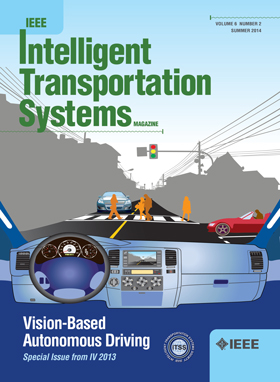Dynamic Option Policy Enabled Hierarchical Deep Reinforcement Learning Model for Autonomous Overtaking Maneuver
IF 7.9
1区 工程技术
Q1 ENGINEERING, CIVIL
IEEE Transactions on Intelligent Transportation Systems
Pub Date : 2025-02-14
DOI:10.1109/TITS.2025.3536020
引用次数: 0
Abstract
Driving an Autonomous Vehicle (AV) in dynamic traffic is a critical task, as the overtaking maneuver being considered one of the most complex due to involvement of several sub-maneuvers. Recent advances in Deep Reinforcement Learning (DRL) have resulted in AVs exhibiting exceptional performance in addressing overtaking-related challenges. However, the intricate nature of the overtaking presents difficulties for a RL agent to proficiently handle all its sub-maneuvers that include left lane change, right lane change and straight drive. Furthermore, the dynamic traffic restricts the RL agents to execute the sub-maneuvers at critical checkpoints involved in overtaking. To address this, we propose an approach inspired by semi-Markov options, called Dynamic Option Policy enabled Hierarchical Deep Reinforcement Learning (DOP-HDRL). This innovative approach allows the selection of sub-maneuver agents using a single dynamic option policy, while employing individual DRL agents specifically trained for each sub-maneuver to perform tasks during overtaking in dynamic environments. By breaking down overtaking maneuvers into several sub-maneuvers and controlling them using a single policy, the DOP-HDRL approach reduces training time and computational load compared to classical DRL agents. Moreover, DOP-HDRL easily integrates basic traffic safety rules into overtaking maneuvers to offer more robust solutions. The DOP-HDRL approach is rigorously evaluated through multiple overtaking and non-overtaking scenarios inspired by the National Highway Traffic Safety Administration (NHTSA) pre-crash scenarios in the CARLA simulator. On an average, the DOP-HDRL approach shows 100% completion rate, 14% least collision rate, 25% optimal clearance distance, and 7% more average speed compared to the state-of-the-art methods.用于自主超车操纵的动态选项策略分层深度强化学习模型
在动态交通中驾驶自动驾驶汽车(AV)是一项至关重要的任务,因为超车动作被认为是最复杂的动作之一,因为涉及到几个子动作。深度强化学习(DRL)的最新进展使自动驾驶汽车在解决超车相关挑战方面表现出色。然而,超车的复杂性给RL代理熟练处理包括左变道、右变道和直行在内的所有子机动带来了困难。此外,动态交通限制了RL agent在超车关键检查点执行子机动。为了解决这个问题,我们提出了一种受半马尔可夫选项启发的方法,称为动态选项策略支持分层深度强化学习(DOP-HDRL)。这种创新的方法允许使用单个动态选项策略选择子机动代理,同时使用针对每个子机动专门训练的单个DRL代理在动态环境中超车时执行任务。dophdrl方法通过将超车动作分解为多个子动作并使用单个策略进行控制,与传统的DRL代理相比,减少了训练时间和计算量。此外,dophdrl可以轻松地将基本交通安全规则集成到超车操作中,从而提供更强大的解决方案。受美国国家公路交通安全管理局(NHTSA)碰撞前场景启发,在CARLA模拟器中通过多种超车和非超车场景对DOP-HDRL方法进行了严格评估。平均而言,与最先进的方法相比,dophdrl方法的完井率为100%,碰撞率最小为14%,最佳间隙距离为25%,平均速度提高7%。
本文章由计算机程序翻译,如有差异,请以英文原文为准。
求助全文
约1分钟内获得全文
求助全文
来源期刊

IEEE Transactions on Intelligent Transportation Systems
工程技术-工程:电子与电气
CiteScore
14.80
自引率
12.90%
发文量
1872
审稿时长
7.5 months
期刊介绍:
The theoretical, experimental and operational aspects of electrical and electronics engineering and information technologies as applied to Intelligent Transportation Systems (ITS). Intelligent Transportation Systems are defined as those systems utilizing synergistic technologies and systems engineering concepts to develop and improve transportation systems of all kinds. The scope of this interdisciplinary activity includes the promotion, consolidation and coordination of ITS technical activities among IEEE entities, and providing a focus for cooperative activities, both internally and externally.
 求助内容:
求助内容: 应助结果提醒方式:
应助结果提醒方式:


